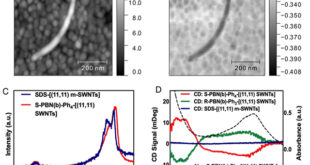Significance
Steel is one of the most used materials across a wide range of fields due to its low cost, availability and exceptional strength properties. Alloying has been widely used to improve the properties and performance of steel to meet the diverse needs of contemporary engineering applications. Different steel alloys are used in different applications. For example, low-alloying steels are preferred for use in large pressure vessels in hydrogen refueling stations.
The application of low-alloy steels in hydrogen gas faces a host of challenges because high-pressure hydrogen gas has significant effects on the alloys. For the safe use of these alloys in such environments, it is important to consider the effects of hydrogen in the equipment design. This would ensure that the resulting equipment has adequate strength to withstand internal pressure and sufficient safety for repeated use. In fact, these factors have been considered in some current design methods.
The effects of high-pressure hydrogen gas on the mechanical properties of low-alloy steels, including tensile and fatigue properties, are well articulated in the literature. Sometimes, low-cost manufacturing methods are used in manufacturing different materials for industrial use, and there are alloys containing different amounts and types of nonmetallic inclusions. The presence of nonmetallic inclusions in steel has been shown to degrade the fatigue strength of steel. However, the effects of nonmetallic inclusions on the fatigue performance of steel in high-pressure hydrogen gas remains underexplored.
On this account, Dr. Hironobu Arashima, Dr. Yusuke Yanagisawa and Ryo Ikeda from Japan Steel Works M&E, Inc., in collaboration with Assistant Professor Shigehito Isobe and Professor Naoyuki Hashimoto from Hokkaido University investigated the effects of nonmetallic inclusions on the fatigue properties of low-steel alloy material subjected to high-pressure hydrogen gas. In particular, they conducted fatigue tests in both hydrogen gas and in the air using four heats of commercial JIS SNCM439 steel. All the specimens were martensitic steel containing nonmetallic inclusions of different sizes with a tensile strength not exceeding 900 MPa. Their work is currently published in the peer-reviewed International Journal of Hydrogen Energy.
The authors reported that the specimens with large nonmetallic inclusions exhibited a decrease in slow strain rate tensile properties in hydrogen as well as a decrease in fatigue life in both air and hydrogen. The results confirmed that the fatigue strength at 300,000 cycles in hydrogen gas and the fatigue limit in the air were approximately equal, even in the presence of coarse nonmetallic inclusions. This was mainly attributed to the inability of hydrogen to adequately penetrate steel material at small stress amplitudes less than the fatigue limit, which is why no differences were observed.
In summary, the study reported the effects of inclusions on the fatigue properties of 900 MPa SNCM439 steel in high-pressure hydrogen gas. The appearance of fatigue fracture surfaces originating from nonmetallic inclusions were different in appearance in hydrogen and air. The fracture surface in hydrogen was formed by secondary cracking and hydrogen-induced quasi-cleavage, with the effect of reduced fatigue life in hydrogen. Moreover, the hydrogen-induced fatigue crack growth rate was accelerated by large nonmetallic inclusions. In a statement to Advances in Engineering, Dr. Hironobu Arashima, first and corresponding author explained that their study would contribute to the understanding of the effects of inclusions on material properties in high-pressure hydrogen gas for proper equipment design.

Reference
Arashima, H., Yanagisawa, Y., Ikeda, R., Isobe, S., & Hashimoto, N. (2022). Effects of inclusions on the fatigue life of SNCM439 steel in high-pressure hydrogen gas. International Journal of Hydrogen Energy, 47(59), 25057–25065.
 Advances in Engineering Advances in Engineering features breaking research judged by Advances in Engineering advisory team to be of key importance in the Engineering field. Papers are selected from over 10,000 published each week from most peer reviewed journals.
Advances in Engineering Advances in Engineering features breaking research judged by Advances in Engineering advisory team to be of key importance in the Engineering field. Papers are selected from over 10,000 published each week from most peer reviewed journals.

